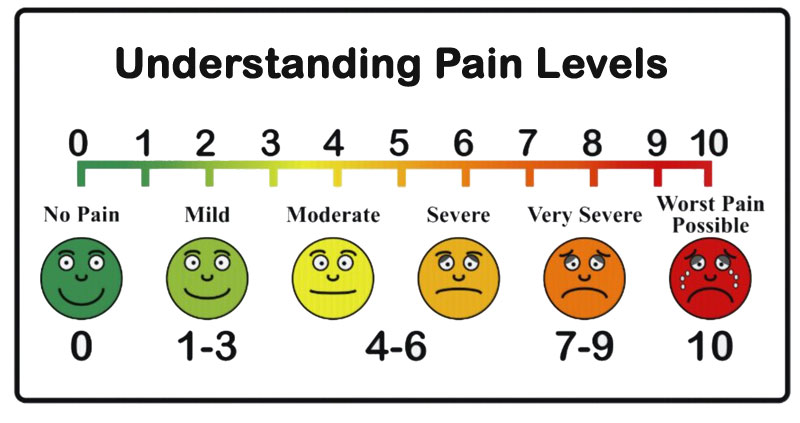Let me say up front that in the realm of people who suffer from chronic pain I am lucky – I manage a full time job just fine, take no more sick days than anyone else, and spend very little of my time feeling so awful I can’t manage.
That said, I also spend very little of my time feeling physically good, and sometimes I manage just by sheer stubbornness. I’m in some amount of pain every day, worse in the mornings. I have been living with chronic pain and fatigue my entire adult life, was diagnosed with Fibromyalgia in my late twenties, and was diagnosed more recently with MS, which is probably what it was all along. Yay for medical advances in MS treatment!
Here are two tools that people who cope with chronic pain (or who cope with those of us who cope with it) should know about.
“Spoon theory”
Even if you (think you) already know what “I’m out of spoons” means, it is 100% worth reading the original explanation. One day, Christine Miserandino was out at a diner with a friend, when her friend asked her what is was like to live with Lupus.
“She asked what it felt like, not physically, but what it felt like to be
me, to be sick. […] At that moment, the spoon theory was born. I quickly
grabbed every spoon on the table; hell I grabbed spoons off of the other tables. I looked at her in the eyes and said “Here you go, you have Lupus”. She looked at me slightly confused, as anyone would when they are
being handed a bouquet of spoons. The cold metal spoons clanked in my hands, as I grouped them together and shoved them into her hands.“
All pain scales are not alike
You know what are terrible? Almost all of the pain scales I have found, save 1. Also, there are a lot of them: https://en.wikipedia.org/wiki/Pain_scale lists abut 50 of them!

Look at this example: What exactly is the worst pain possible? Are you measuring my pain, or my imagination? How is this helpful?
The pain scale I am a fan of was written by Andrea Mankoski. What do I like about it? It’s hard to bullsh*t. It’s hard to say your pain is not so bad, or worse than it is. It doesn’t really relate to how you emotionally react to the pain, it’s just.. what it is.
Mankoski Pain Scale
Copyright © Andrea Mankoski. All rights reserved. Right to copy with attribution freely granted.
| 0 | Pain Free | No medication needed. |
| 1 | Very minor annoyance – occasional minor twinges. | No medication needed. |
| 2 | Minor annoyance – occasional strong twinges. | No medication needed. |
| 3 | Annoying enough to be distracting | Mild painkillers are effective. (Aspirin, Ibuprofen.) |
| 4 | Can be ignored if you are really involved in your work, but still distracting. | Mild painkillers relieve pain for 3-4 hours. |
| 5 | Can’t be ignored for more than 30 minutes. | Mild painkillers reduce pain for 3-4 hours. |
| 6 | Can’t be ignored for any length of time, but you can still go to work and participate in social activities. | Stronger painkillers (Codeine, Vicodin) reduce pain for 3-4 hours. |
| 7 | Makes it difficult to concentrate, interferes with sleep You can still function with effort. | Stronger painkillers are only partially effective. Strongest painkillers relieve pain (Oxycontin, Morphine) |
| 8 | Physical activity severely limited. You can read and converse with effort. Nausea and dizziness set in as factors of pain. | Stronger painkillers are minimally effective. Strongest painkillers reduce pain for 3-4 hours. |
| 9 | Unable to speak. Crying out or moaning uncontrollably – near delirium. | Strongest painkillers are only partially effective. |
| 10 | Unconscious. Pain makes you pass out. | Strongest painkillers are only partially effective. |
My advice, such as it is
Chronic pain can be terrible – about half of people with chronic pain hit clinical thresholds for depression and anxiety (depending on which study you read). There’s (usually) no silver bullet – it’s about having strategies and practices and tools to use every day.
I am not a medical professional, so please take my advice in that light. That said, if you’re struggling and don’t know where to start, start with rule out testing. If your doctor is not helpful, FIND ONE THAT IS.
- Thyroid
- Lyme disease
- Vitamin D
- Vitamin B12
- CBC (Complete Blood Counts)
- CMP (Complete Metabolic panel)
- Anemia
I am still not a medical professional (or guru!), but here’s my day-to-day list. in general I can get away with failing at 1 of these on a given day. 2-3 is chancing it, and 4 or more is right out. (and YES this takes time and energy.)
- Daily breathwork/meditation practice
- Sleep
- Eating what works for me
- Getting enough water
- A little but not too much movement and exercise
- Stress level
- Medication
- Vitamins
- Herbal supplements
- Doing something in my day that brings joy
And last but not least, having a great support network to help make those things happen.

